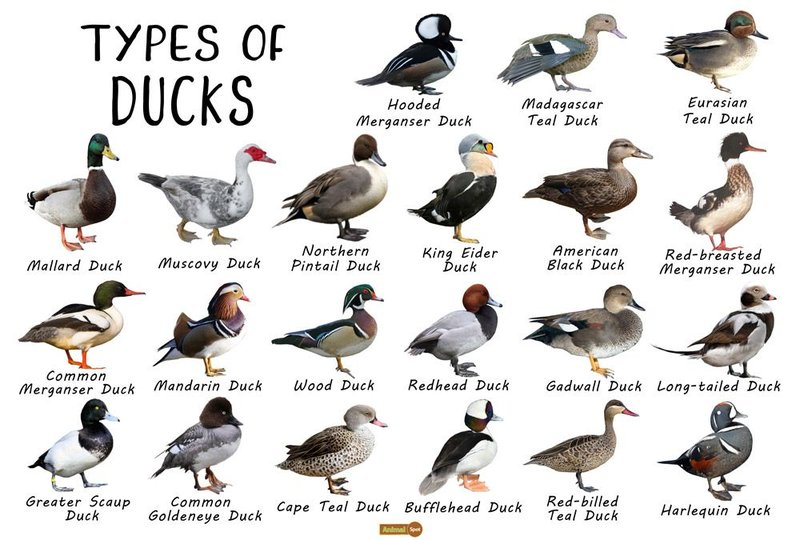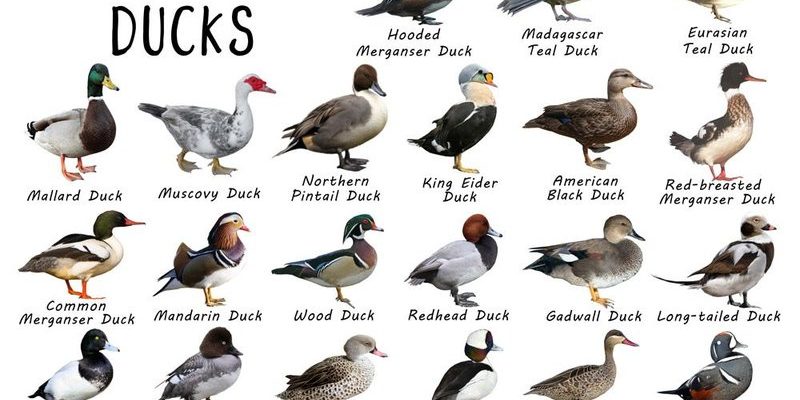
Understanding the differences between ducks and similar bird species isn’t just for birdwatchers or nature enthusiasts. It’s all about appreciating the intricate web of life we share our planet with. You might be surprised by how these birds adapt to their environments and what makes each species special. From their unique physical characteristics to differences in behavior and habitat preferences, we’ll unravel the details together.
Physical Characteristics: What Sets Ducks Apart
When it comes to identifying ducks, one of the first things to notice is their body shape. Ducks typically have a more rounded body compared to their relatives, which often have longer necks or bulkier builds. For example, swans are known for their elegant, elongated necks that give them a regal appearance. In contrast, ducks have stockier frames that make them excellent swimmers.
Another striking feature is their bill shape. Ducks possess broad, flat bills that help them forage in water for food. This unique shape allows them to dabble on the water’s surface, filtering out plants and small fish. Swans and geese, on the other hand, often have longer, more pointed bills, making them better suited for grazing on land.
Coloration plays a significant role, too. Male ducks often display vibrant plumage to attract mates, while females tend to have more muted colors for camouflage during nesting. Geese generally have a more uniform color palette, while swans boast majestic white feathers. Observing these differences can enhance your birdwatching experience immensely.
Size Matters
Size is another key factor that helps distinguish ducks from similar bird species. Most ducks are relatively small to medium-sized birds, making them nimble and agile in the water. Swans, the giants of the waterfowl family, can be quite hefty, sometimes weighing up to 30 pounds! In contrast, geese are generally somewhere in between, with a noticeable bulk that can be quite intimidating to smaller birds.
Understanding their size can also inform your interactions with these birds. If you’re feeding them in the park, for example, smaller ducks might be shy and hang back, while larger geese can be more assertive when it comes to snagging a snack.
Behavioral Differences: How Ducks Act
You might be wondering how ducks behave differently than geese or swans. One of the most noticeable traits is their feeding habits. Ducks are dabblers and divers, often seen bobbing along the water’s surface to hunt for food. They can be quite entertaining to watch, doing their little “dance” as they tip forward to reach underwater plants.
In contrast, geese are more likely to graze on grass and other vegetation. While they can dabble, they prefer to stick close to land when searching for snacks. Swans, with their long necks, can reach deeper waters, allowing them to access food that ducks and geese might miss.
Social structure also varies among these birds. Ducks are often found in flocks, especially during migration. They form strong bonds and communicate frequently with quacks and whistles. Swans, on the other hand, are known for their monogamous pair bonds, often seen gliding gracefully together in the water. Geese are social creatures too, living in family groups but can be more aggressive when defending territory.
Mating Rituals: Love is in the Air
When it comes to courtship and mating rituals, ducks, geese, and swans all have their distinct styles. Male ducks engage in elaborate displays to attract females, showcasing their striking colors and performing charming dances. They can often be seen bobbing, flapping, and even making unique calls to woo their partners.
Geese, on the other hand, tend to be more straightforward in their approach. They engage in lots of honking and physical displays to assert dominance and attract mates, often sticking with one partner for life. Swans take the cake for more romantic displays, performing synchronized movements and vocalizations that can make even the most stoic observer smile.
Habitat: Where Do They Live?
Choosing a habitat is critical for any bird species, and ducks have specific preferences when it comes to their home. They often thrive in wetlands, lakes, rivers, and marshes, where they can easily find food and shelter. You’ll notice ducks floating on ponds or foraging in grassy areas along the water’s edge.
Geese prefer similar environments but often venture further onto dry land, where they can graze on grass and grains. They are commonly seen in agricultural fields and parks, where they can find ample food sources. Swans typically prefer more pristine areas and can often be found in larger lakes or rivers that provide space for their sizeable bodies.
Understanding their habitats can also help you appreciate the delicate ecosystems these birds inhabit. Wetlands, for instance, are vital for ducks and serve as crucial breeding grounds. Protecting these areas is essential for their survival and that of countless other species.
Migration Patterns: The Journey of Ducks
Migration patterns can also set ducks apart from their avian relatives. Many duck species migrate seasonally, traveling thousands of miles to find warmer climates during winter. This journey is often a sight to behold, with flocks flying in a “V” formation, which helps them conserve energy.
Geese and swans are also migratory but tend to have different routes and timings. Geese often migrate in larger groups and can be more vocal during their travels. Swans may migrate solo or in smaller family units but follow similar principles, seeking out suitable habitats for wintering.
Understanding these migration patterns is crucial for conservation efforts, as it helps us recognize the importance of protecting the migratory routes these birds take. By safeguarding their habitats, we support not only ducks but also the diverse wildlife that depends on these ecosystems.
In wrapping up our exploration into the differences between ducks and similar bird species, we can see just how unique each of these birds truly is. From physical traits and behaviors to habitats and mating rituals, understanding these distinctions enriches our appreciation for the natural world around us.
Next time you’re at a pond or a park, take a moment to observe these feathered friends closely. Whether it’s a vibrant duck splashing in the water, a graceful swan gliding by, or a protective goose defending its territory, there’s a story behind every bird you see. By recognizing their differences, we can better appreciate the intricate tapestry of life that connects us all. So, here’s to ducks and their avian cousins—each one a fascinating piece of the puzzle!

